In the UK, when we think of Easter we may envision fluffy bunnies, cute yellow chicks, Cadbury’s chocolate eggs, Easter baskets, springtime flowers like daffodils, crocuses, and tulips, and pastel-coloured eggs. For those with children, your house may be full of Easter crafts like bunnies made from loo roll cardboard or peek-a-book eggs with chicks or decorated paper eggs to stick on the fridge. It’s an exciting time for adults and children alike who love the more modern tradition of receiving chocolate eggs, Easter break, and, for the grown-ups, the long Easter Bank Holiday weekend. But how did Easter originate and what exactly is the history behind the chocolate eggs? Why do we have hot cross buns, eggs, and bunnies? Let’s explore Easter’s roots.
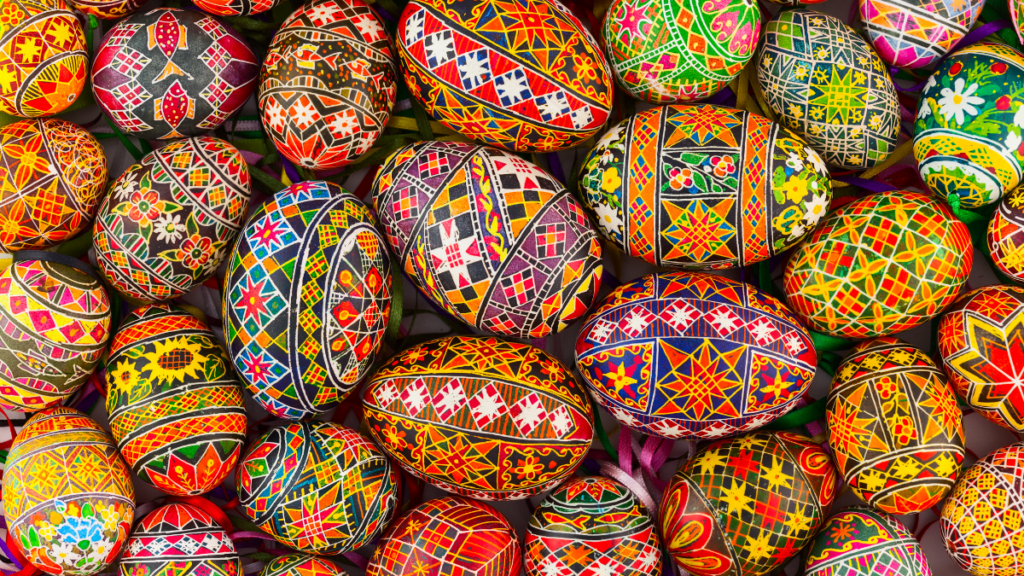
How did Easter originate?
For secular Brits, Easter is just another holiday where you see supermarket shelves filled with foil-covered chocolate Easter eggs. For the non-secular, Easter signifies three days after the end of Lent and is part of Holy Week, which begins on Palm Sunday.
Easter is one of Christianity’s main holidays, marking the Resurrection of Jesus three days after his crucifixion, where he left an empty tomb. The New Testament, notes that Jesus’s resurrection, where he ascended to Heaven, ushered the Kingdom of God, forgiving sin and baptizing repenters. Easter marks the end of the fasting period of lent.
Easter also coincides with the time of the Jewish Passover. Passover, occurring on the fifteenth day of the Hebrew month of Nisan (the first month of Spring), celebrates the Biblical story of the Israelites escaping from slavery in Egypt. Traditional Jewish families gather at Passover to eat a special meal called the seder. The story of the Exodus is told during the meal using the special text called the Haggadah and four cups of wine are consumed in the ceremony containing fifteen ritual steps.
In the Bible, the Exodus from Egypt is recorded in the Old Testament as is the Last Supper and crucifixion. In the New Testament, Jesus gave a Passover meal by preparing himself and his disciples for his death, identifying the loaf of bread and cup of wine as his body and blood, soon to be sacrificed.
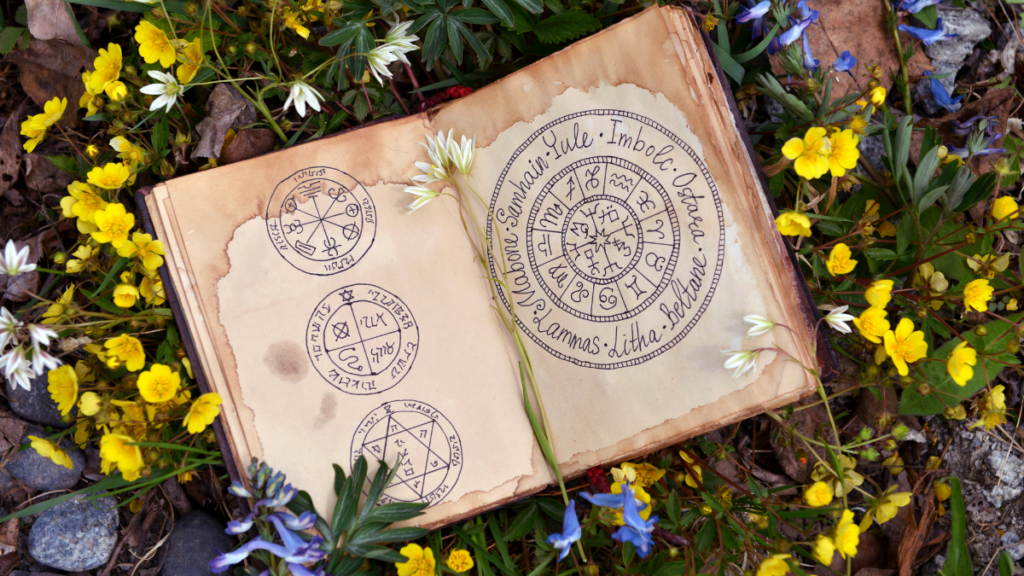
However, the origins of Easter started earlier than Christianity in the ancient pagan celebration of the Spring Equinox. The Venerable Bede in the eighth century believed the word “Easter” was derived from “Eostre” who was the Anglo-Saxon goddess of spring and fertility. This view aligns with the pagan celebrations of the solstice, including the winter solstice around Christmastime. But others note that the word derives from “albis” (or its plural “alba”), which means “dawn,” which became “eostarum” in Old High German. The Latin and Greek word for Passover, “Pascha,” provides the root for the French word for Easter, “Pâques.”
Those early Christians who didn’t participate in Jewish customs merged customs with the pagan spring festival. The earliest written record of Easter traditions comes from the second century but it is likely customs began long before they were recorded. Therefore, many of our Easter traditions follow a mix of old pagan rituals and newly adopted Christian ones.
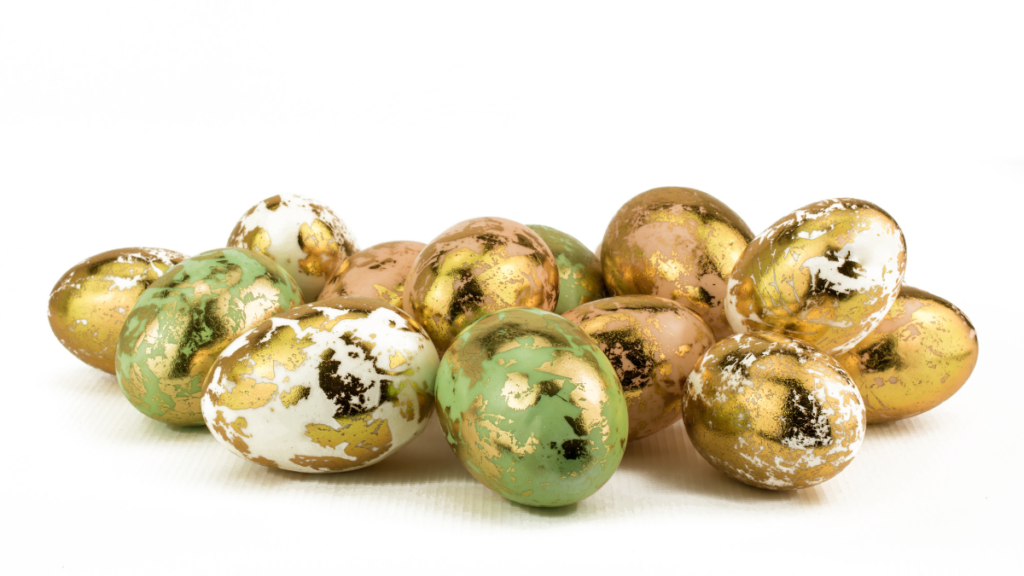
How did the church decide when we should celebrate Easter? Why does the date change every year?
Deciding how to fix the date of Jesus’s resurrection caused much controversy in early Christianity, known as the Paschal controversies, and wasn’t resolved until the eighth century. In Asia Minor (central and western Turkey), Christians observed Easter on the same day as the Jewish Passover (the fourteenth day of the first full moon in spring). The west decided the date would be fixed for the first day of the week, Sunday, when Jesus had risen from the dead, so Easter was celebrated on the first Sunday after the fourteenth day of spring. The Council of Nicaea in 325 decreed Easter should happen on the first Sunday after the first full moon after the spring equinox (21st of March). So, in essence, Easter now falls on any Sunday between the 22nd of March and the 25th of April. This year, Easter is Sunday, the 9th of April 2023.
The Eastern Orthodox church uses the Julian (rather than the Gregorian) calendar, which is thirteen days ahead, so Easter is usually celebrated later for Protestants and Roman Catholics. Orthodox tradition also prohibits Easter from being celebrated at the same time as Passover, or before it.
In the twentieth century, there were attempts to fix the date of Easter to make it the Sunday following the second Saturday in April. But the new dating system never took off. The idea was again resurrected in the early twenty-first century with the leaders of the Easter Orthodox, Syriac Orthodox, Coptic, Anglican, and Roman Catholic churches, yet again, a formal agreement never came to fruition.
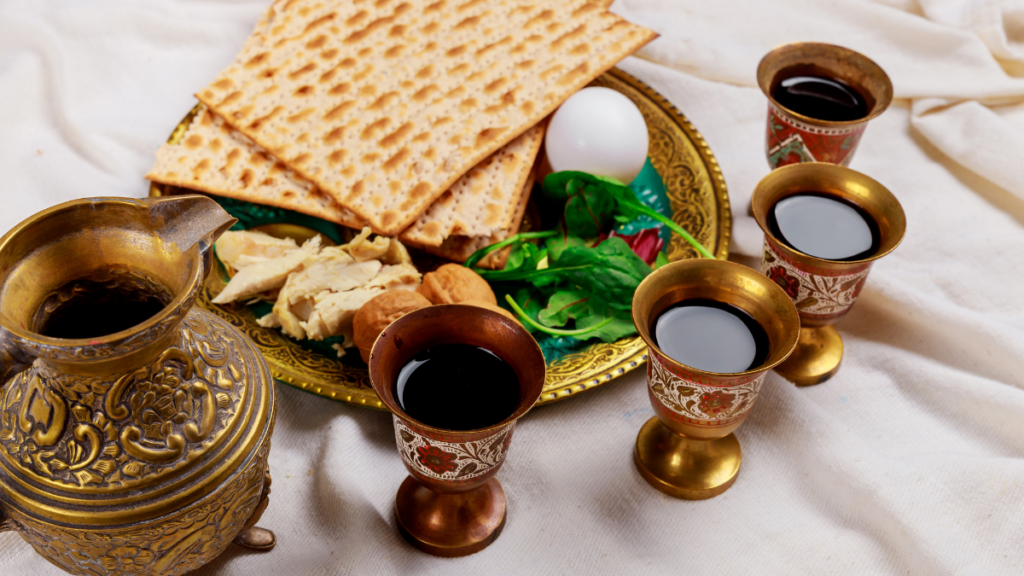
How did the pagan tradition become about Easter Sunday?
Easter is the earliest Christian festival where Christians celebrate a man becoming God. The shift led to the Christian emphasis from a faith “in God” to a faith “in Christ.”
The Christian calendar has Easter following Lent, which is a period of forty days of fasting (not counting Sundays) before easter. Easter is preceded by Holy Week, which includes Maundy Thursday, which commemorates Jesus’s Last Supper. Good Friday is the day of the crucifixion and Holy Saturday is the transition between crucifixion and resurrection.
The pagan traditions around the Spring Equinox celebrated renewed life in the spring where day and night are equal. During this time, pagans carried out rituals such as playing out courtship, planting seeds, having egg races, egg hunts, egg eating, and egg painting, some of which have crossed over into our Easter traditions.
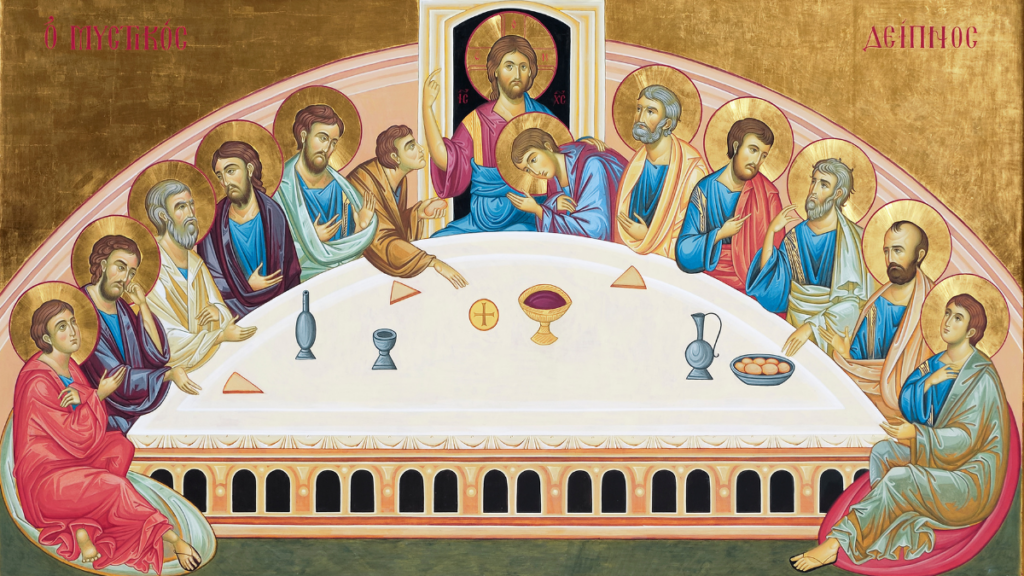
What are Easter traditions and symbols?
Modern Easter traditions come from a blend of Christian themes and ancient pagan ones. Eggs, bunnies, and sweets all have pagan roots.
- Easter eggs: The symbol of the Easter egg can be traced back to the Ancient Babylonians. They believed an egg fell from heaven in the Euphrates River and “hatched” Astarte, the goddess of fertility (also known as Ashtur, Ishtar, or Easter). Pagans exchanged eggs as gifts in spring. Long before Christianity, eggs were traditionally painted with bright colours to celebrate the sunlight of spring. Egg decorating was popular from the middle ages throughout Europe. There’s an account in 1307 in King Edward I’s household accounts ledger for eggs to be boiled, dyed, and covered with gold leaf and distributed to those in the Royal household. In Greece, crimson-coloured eggs, to symbolise the blood of Christ, were exchanged, and in Eastern Europe and Russia, silver and gold decorations were more common. In Austria, Easter eggs often had plant and fern designs. The first Fabergé eggs were made as an Easter gift in 1883 for the Empress Marie of Russia from her husband, Tsar Alexander. Later traditions made artificial eggs of precious metals like silver and gold or precious materials like ivory and porcelain, often inlaid with jewels. In the eighteenth century, people bought pasteboard or papier-maché eggs where they hid gifts. In the nineteenth century, cardboard eggs were covered with silk, lace, or velvet and fastened with ribbon as decorations. Today, we still colour and dye boiled eggs in bright colours and orchestrate egg hunts where children collect hidden eggs, either boiled eggs or plastic ones filled with goodies.
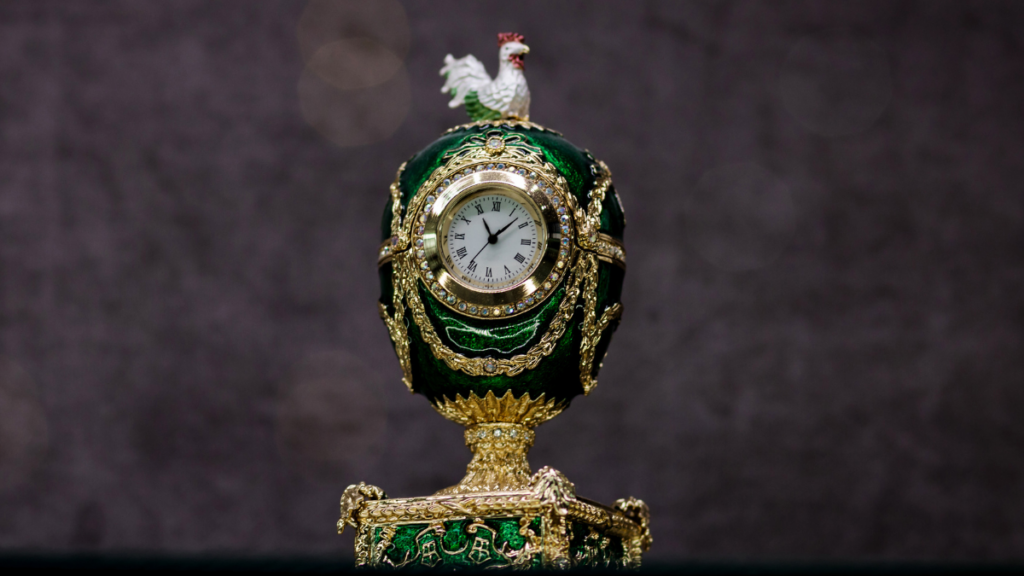
- Easter bunny: Rabbits have long been a symbol of spring and fertility. The bunny’s origins came from pagan roots where the Norse goddess, Ostara, was associated with the rabbit, the hare, and the egg – and thus fertility. The goddess of the dawn, Eastre, was also associated with the rabbit, a symbol of new life. Modern Easter lore has the Easter bunny bringing eggs and treats for children to enjoy. Some historians believe this legend of the Easter Bunny has German roots from the seventeenth century when children believed the Easter Bunny would leave them coloured eggs if they were good. Children left out their bonnets and caps to receive these gifts.
- White lilies: These white lilies are sometimes so associated with Easter that they are called the Easter lily. Lilies are associated with purity and resurrection. Some believe the shape of the lily is associated with reproductive organs and fertility. One Christian legend described that lilies grew in the Garden of Gethsemane where Jesus prayed on the night before his death. Other spring flowers associated with Easter include daffodils, crocus, hyacinth, and tulips.
- Crosses: The Easter season is associated with crosses and crucifixes to symbolise Jesus’s death.

- Chicks: Chicks signify a spring message of rebirth. Early Christians took these symbols of rebirth (rabbits, lambs, chicks) and associated them with fertility, new life, resurrection, and the rebirth of Jesus.
- Palm branches: These are associated with Palm Sunday, the Sunday before Easter, when Christ’s entry into Jerusalem is celebrated by processions where people carry palm branches.
- Hot cross buns: In the pagan feast of Eostre, the Saxon fertility goddess, an ox, was sacrificed and the crossed horns became a symbol of the festival. Crosses were carved into bread at festival time. The word “bun” comes from the Saxon word “boun” meaning “sacred ox.”
- Easter candles: Pagans lit bonfires to welcome the rebirth of the sun God, which Christians have adopted into the Easter Vigil service.
Did any of these mishmashes of pagan and religious traditions surprise you?

Why do those in the UK exchange chocolate eggs?
In the US, chocolate Easter eggs are not part of their traditions. In the UK and Europe, however, exchanging chocolate Easter eggs has been a longstanding tradition. The first chocolate Easter eggs came about in the early nineteenth century in France and Germany. Even though eating chocolate had been recently invented, it couldn’t be moulded successfully. Solid eggs were easier to make but the first hollow chocolate eggs were a labour of love where each mould was individually lined with chocolate paste.
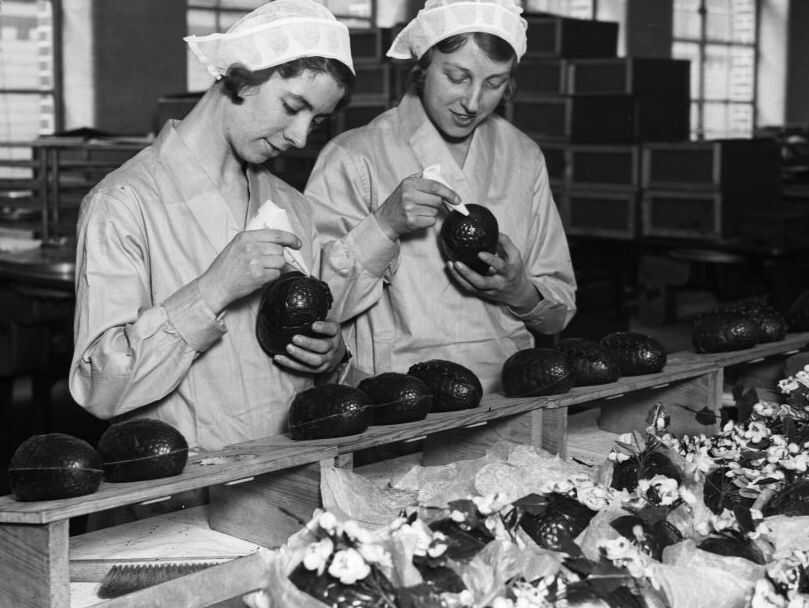
In 1842, John Cadbury made his first “French eating chocolate” but the first Cadbury Easter eggs weren’t made until 1875, a full two years after J. S. Fry & Sons had introduced the English to the first chocolate egg in 1873. It took a while to discover the method of making chocolate flow into moulds, which came about because of the invention of the press that separated cocoa butter from the cocoa bean by the Dutch inventor Van Houten in 1828 and the introduction of pure cocoa by the Cadbury brothers in 1866. The Cadbury process made it possible to make large quantities of cocoa butter which was the secret of making “fine eating chocolate.”
Fry’s, Cadbury’s rival, sold drinking chocolate in the 1750s and the first chocolate bar in the 1860s. A particular favourite was their chocolate Cream Bar, which is still in production today.
For their Easter egg campaign, they designed colourful adverts on posters and postcards. Traditionally at Easter, people gave each other dyed boiled chicken eggs, but Fry thought he could have the general public exchange chocolate eggs instead and – just like that – a tradition was born!
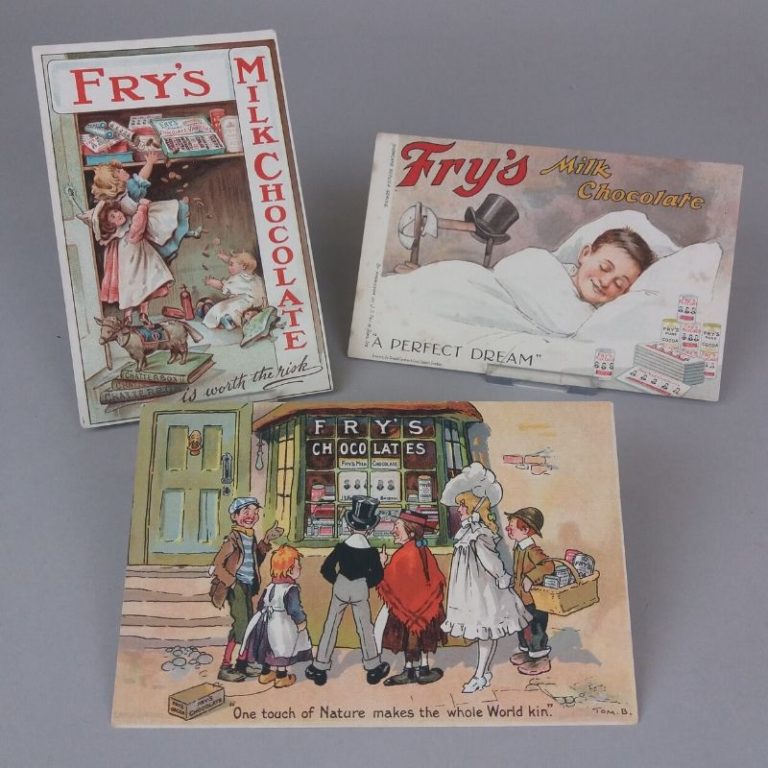
Because chocolate moulding hadn’t been perfected, the earliest chocolate eggs had the “crocodile” design to hide cracks and imperfections – which is a design still used today.
France and Germany had been making eggs for many years before the UK, but those were solid chocolate and not hollow eggs. Once Fry perfected the hollow egg, he continued to make other shapes like chocolate-shaped animals. Fry’s was taken over by Cadbury in 1935.
The chocolate Easter egg market has exploded over the years and it’s big business. It’s estimated that between eighty and ninety million chocolate eggs are eaten annually in Britain, with consumers spending upwards of £415 million on Easter eggs. Plus, another fun fact is that over five hundred million Cadbury’s cream eggs are produced each year for Easter. That’s an awful lot of cream eggs!
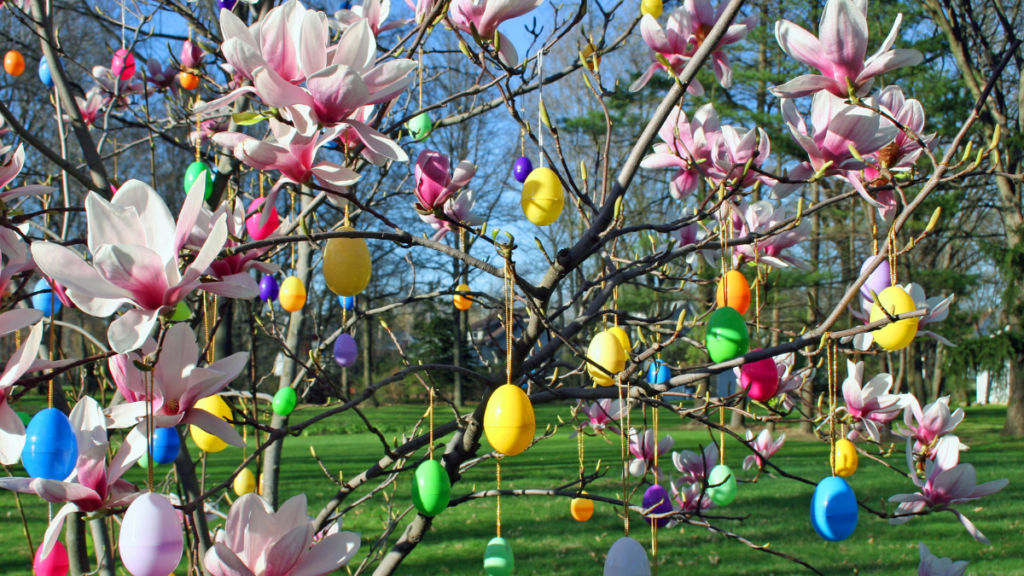
Tria Beauty UK’s Easter blog roundup
Loving our blog? Read more Easter-themed blogs from Tria Beauty UK. For those with children who are generally off during the Easter holidays, you can check out our Easter holiday ideas with the family blog and our Surviving Easter: techniques for reducing stress – as we know it can be a challenge keeping children entertained for the whole break!
For those who are just enjoying the Bank Holiday with family and friends, here are Ways to get with the Easter holiday vibe. Let’s just hope the UK weather cooperates this year!
Our many lovely vegans (including Marketing Director, Emma) find it difficult to know just where to buy vegan Easter eggs, so we’ve got you covered with our Where to find this year’s best vegan Easter eggs blog. And it looks like places like Hotel Chocolat and other retailers are really up with the vegan movement too as there seem to be even more choices for the vegan in your life this year. Enjoy the yummy treats without the dairy!
The takeaways
Let us know on Tria Beauty UK’s Facebook or Instagram what your Easter Bank Holiday plans are this year. If you want to be hair free in time for summer, don’t forget to start using your Tria 4X laser once a fortnight for twelve weeks!
